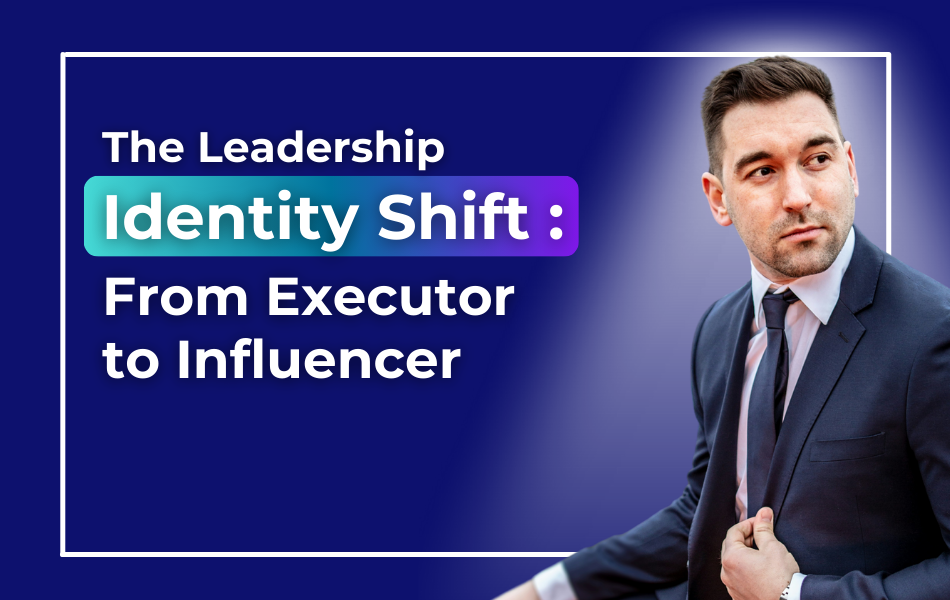
216. Decide About Deciding
About this Podcast
Ep. 216 – Have you ever made a sound decision that turned out poorly, only to be harshly judged (or to harshly judge yourself) in hindsight?
It’s a common trap: we often evaluate decisions based on their outcomes, ignoring the quality of the decision-making process itself. But what if that unlucky choice was actually the best decision given the information available at the time?
Making decisions is a core responsibility for leaders. Yet, many lack an intentional framework or methodology for how they make decisions and as a result, spend little time reflecting about how strong their decision-making skills actually are and what they can learn from past decisions.
In this episode of The Manager Track podcast, Ramona explores the importance of a thoughtful approach to decision-making.
She outlines key considerations like fast vs. slow decisions, the levels of decision-making involving your team, and identifying your personal decision filters. Ramona also shares guidance on facilitating productive decision-making meetings to drive toward clear outcomes.
Whether you’re struggling with ineffective consensus-building, analysis paralysis from seeking too much information, or a lack of decisiveness, this episode provides valuable insights.
Watch it on YouTube here.
Episode 216 Transcript:
0:00:00 Ramona Shaw: Here’s the how do you successfully transition into your first official leadership role? Build the confidence and competence to lead your team successfully and establish yourself as a respected and trusted leader across the organization? That’s the question, and this show provides the answers. Welcome to The Manager Track podcast. I’m your host, Ramona Shah. And I’m automation to create workplaces where work is not seen as a source of stress and dread, but as a source of contribution, connection, and fulfillment.
0:00:28 Ramona Shaw: And this transition starts with developing a new generation of leaders who know how to lead so everyone wins and grows. In the show, you learn how to think, communicate, and act as the confident and competent leader you know you can be.
0:00:44 Ramona Shaw: Welcome to this episode of The Manager Track podcast. I want to talk to you about making decisions. Making decisions is something that a lot of leaders don’t really think about. Of course they make decisions, and of course they assess their decision making and process and probably reflect on it here and there. But oftentimes it’s not really principle driven, not really with a framework or methodology in mind.
0:01:10 Ramona Shaw: And they kind of leave it up to everyone on the team to make decisions in their own way and their own approach. Now, maybe we give some feedback. If you notice someone makes decisions in a rash kind of way, or in a unqualified way, or procrastinates on decisions or too consensus driven, then we give specific feedback, but we don’t provide guidance on how to go about decisions. And when we think about a holistic approach to your leadership philosophy, you think about how you lead in your leadership methodology as if it was a hard skill. Let’s say if you are a teacher, or if you are an analyst, or if you are marketing manager and you have to run campaigns, you have to do an investment analysis, you have an approach to it.
0:02:07 Ramona Shaw: You have some kind of framework that you use in order to address the topic or the problem, to then resolve it, or to get the goals that you have set and you like to follow. Or listen to people who also have a framework, who have some kind of game plan or we’ve called them roadmaps or playbooks to go by. And it’s not that we need to be sticklers about it and always follow the protocol, but we need to be able to articulate it in a clear, concise way what we’re about to do or how we’re going to go about solving a problem.
0:02:44 Ramona Shaw: And ideally, we can reference this kind of framework or methodology over and over again because provides other people with that sense of consistency, reliability, and understanding of what you as a leader are expecting. So that is why we think about leadership philosophies in that kind of way where it’s not shooting from your hips, but really it is intentional and thought through, how we go about it.
0:03:07 Ramona Shaw: And we do this kind of work inside of all our programs and when it comes to decision making, specifically in our leadership advisory program for advancing leaders. So leaders who are moving into middle management and above, who want to look at their leadership competencies and leadership approach, taking a step back and really holistically look at this and see where are the gaps, where are things that I haven’t thought through or where there missed opportunities, and how I manage up and across, how I manage my team, how do I create a strong collaborative network, how I make decisions, how about things strategically and so forth. There’s a lot of topics that go into that, but I do want to carve out a little slice of that conversation around decision making to talk to you about this on the podcast, because I know that not everyone listening to the podcast is part of our inner circle or our clients and is exposed to our relationship frameworks or our trainings on topics such as decision making.
0:04:08 Ramona Shaw: And I do want to share this more broadly so that this episode, hopefully, will inspire you to think about your approach to decision making.
0:04:18 Ramona Shaw: Okay, so this is why we’re talking about it.
0:04:21 Ramona Shaw: And I also want to share a particular example in how the lack of decisiveness or lack of a intentional decision making process can lead to problems down the road. Here is where I see this. Often in conversations with companies or with leaders. Specifically, one is, we want to and like to collaborate. And when we do, and we have a decision that we need to make as a leader and we want to make this collaborative, we will bring this up in team meetings. We will seek people’s inputs. We might bring it to our boss.
0:05:02 Ramona Shaw: And all of a sudden, there’s a lot of chefs in the kitchen, a lot of people who have some kind of opinion, and we want to find consensus. We want to see, can we all get on the same page? And so the effort in decision making then becomes about getting people to buy into one single idea, likely the one that we prefer, and convincing each other. That is a futile effort, because we, yes, there is something to say about influencing others and getting their buy in, but consensus means we’re spending a lot of time trying to get people to buy into it when that is not necessary.
0:05:44 Ramona Shaw: When we have a decision making framework that says there’s one person with the agency to make a decision, and then the rest of the team, they need to share their opinions, and they need to provide information to the person who’s making the decisions. But then once the decision is made, we all just commit and execute whatever that decision is, whether we agree to it or not. So that desire to create consensus is what backfires and makes a lot of leaders ineffective and slows things down where it can get really tedious and annoying for some people who just want to go faster and the leader often doesn’t see it.
0:06:22 Ramona Shaw: A second example of how a lack of a decision making framework makes things really difficult for leaders is when they have this innate desire to have as much information as possible. Because the way that they look at a decision is to make sure that they do everything possible to make the right decision. But think about this. We make a decision, and then we collect information up to the moment of decision, and then we collect more information after decision was made, because we move into execution and we learn more and we see how it all plays out, for example.
0:07:02 Ramona Shaw: And then we look back and we think, was this a good decision or was this a bad decision? That makes no sense. We cannot assess a decision based on information we’ve gathered after the decision was made to decide whether that was a good decision or not. That’s not how it works, but yet that’s how many leaders operate when they make decisions. So what we want to do instead is we want to evaluate this decision making process and look at whether or not that’s solid and sound. And when we reflect on a decision that we made in the past to assess, self evaluate, did I do a good job in the decision making process?
0:07:48 Ramona Shaw: Or was I cutting corners? Was I rushed? Was I biased? Was I emotionally driven? Was I eager to appease people on the team? I didn’t want to upset anyone? Or was I prolonging and delaying the process and then making a decision way too late, which slowed everyone down? Those are the questions we need to ask ourselves, because that helps us understand what it is about our decision making process. That then leads to high quality decisions after the fact.
0:08:21 Ramona Shaw: Even making a high quality decision and having a strong decision making process in place still leads to decisions that you’ll regret down the road because new information came to light. And so life. That is the fact. One thing that is one specific example we see all the time is hiring. If you are a hiring manager and you have the last word on whether or not this employee will be hired in your team, or if that candidate will be declined, it is a huge decision.
0:08:55 Ramona Shaw: Making a wrong hire is costly, time consuming, and takes a lot of energy from you and from your team and your HR team and others, right? You have to go through that process of negotiating salary, onboarding them, the logistics of it, the admin aspect of it, the legal side of it. Then finally they actually start. And then you have to put all that training and coaching into it, and resources and time from you and your team will be sucked into getting people up to speed.
0:09:30 Ramona Shaw: And for some jobs, it takes months to get someone up and running. And if your decision in making that hire wasn’t done in an intentional, deliberate way, and if you realize six months into this person joining your team that you made a wrong hire, that is a heavy burden. So think back of a time when you had to make a decision whether to hire someone or not. And I hope you can recall a moment, it’s likely within a meeting or in a day where you’re reflecting on it, or you were reviewing your notes and you had a gut instinct, but hopefully also a lot of information at hand to decide. And it is impossible to have 100% of the information that you need to make the right decision all the time.
0:10:17 Ramona Shaw: They’re candidates. They’re not yet employees, so they are not showing up as employees yet. And you don’t know yet what it’s going to look like in six months, regardless of how lengthy and intensive that entry process is. It’s limited information that you have. So that’s one, it’s a high stake decision, which means you have emotional response to it and your emotions are getting involved in it. And three, we all have biases.
0:10:41 Ramona Shaw: Whether we like it or not, you are biased when making a hiring decision. All this stuff is influencing your decision of whether or not to hire a candidate. And all of this is impacting your hiring decision. So when you look back at the time you made that decision and you say, oh, I made a good call. It was a good call to hire this person because look, they’re working out, or oh, this was a bad call to hire this person because look, they’re not working out.
0:11:11 Ramona Shaw: And you think about your decisions from an after effect kind of perspective, you’re missing out on a huge learning opportunity. Ask yourself instead if this is a good hire. You ask yourself, what did I do in the hiring process that helped me make this decision that I now after the fact, like, and chances are high. There’s also a good amount of luck involved in making the right hiring decision. But based on what was controllable and within your influence, what did you do well?
0:11:45 Ramona Shaw: And reflecting back on the decision where you made the wrong hire, what did you do or not do in that interview process leading up to that decision? I know that I remember from hiring people in the past that I think weren’t the right hires, that I either did have as, excuse my language, reference checks on those candidates. I didn’t ask the right questions to really uncover and read between the lines of that reference call, or I needed a person really badly, and I knew that if not this person, then we would have to go back to first round interviews because we’re in the final round and there’s no one else good in the pipeline.
0:12:28 Ramona Shaw: So going back to screening hundreds of resumes and then going back to first interviews and second round, and all the while still carrying two jobs, right. My job and their job, that was such a bad possible outcome that I was willing to neglect some flacks right in the interview process and just hope that I was wrong and that it would all play out and work out well. Those are the times that my hiring process wasn’t solid and sound.
0:13:04 Ramona Shaw: It wasn’t so much about the actual decision after the fact, because, again, this could have played despite and despite the red flags, it could have worked out, or despite no red flags, it could have also not worked out. And so we have to really separate the outcome from the decision making process to use this as a learning opportunity. So let’s look at a few things you want to consider when making decisions.
0:13:30 Ramona Shaw: One, let’s look at fast decisions versus slow decisions. Which decisions need to be made fast, and which decisions are decisions we need to procrastinate on and kind of give it some time to ruminate, to think through, to explore different avenues and risks, gather more data and waiting is the right. Prolonging that timeframe is the right thing to do. Fast decisions are those. There’s usually lower risk or they’re reversible. If new information came to light that would prove that we made the wrong decision.
0:14:02 Ramona Shaw: Those are decisions to make fast. So what in your world are decisions that need to be made fast, and what are decisions you want to prolong and extend? Hiring, by the way, would likely be one of those decisions you want to give yourself enough time to really think through. The second aspect to consider here is, what level of decision is this? There is the autocratic level. Let’s call this number one, which is I decide.
0:14:28 Ramona Shaw: It’s my decision. You guys don’t even need to be involved. I just decided, period. The second level is, well, we talk, and then I decide. We call this consent based decision making. So I want to hear all your input, but then I’ll make the decision and I’ll own it. The third level is we all talk and then we all decide. Now it gets very collaborative, and this is where the, the pitfall of being too consensus seeking is going to play into it.
0:14:59 Ramona Shaw: But that’s the third level. The fourth level is we talk, and then you decide. You’re basically consulting me, but then you make that decision. And when you’re leading people who have their own domain expertise and you want them to take more ownership and you want to elevate them, that fourth level, we talk, you decide. It’s a really good way to provide more ownership and autonomy to them. And then the fifth level is when we don’t even talk, you just decide. And I’ve now fully delegated that responsibility to you on my team.
0:15:39 Ramona Shaw: So five levels of decision making and what level applies to which situations, and going into a process where, you know, we have to make a decision, think about what kind of decision this is going to be, at what level will you make that decision? And to make sure everyone else is clear about that, too. So those are the levels when you have a large group of people talking together. The benefit of level one and level five, where you delegate the decision fully or you own the fully, the decision autocratic is it’s fast, right? You don’t have to do a lot of talking.
0:16:20 Ramona Shaw: The benefits of talking together is that you bring in a range of different perspectives. It’s usually more innovative. You gather more information because more people are involved in the process. You’re able to think through risks and opportunities more. You’re likely more creative and innovative solutions come out of those conversations. It establishes trust because people see the process more transparently, and it also helps to get buy in. Whenever you involve people in the decision making process, even if they’re not owning the final decision, they will feel more engaged and supportive of it. So again, weigh the pros and cons.
0:16:57 Ramona Shaw: A third aspect that we talk about in our leadership advisory program quite a bit is to understand your decision filters. What are the things you need to consider before you make a decision? When it comes to hiring someone, for example, what are the decision filters? Is it that the team likes them, that they fit the salary range, that they’re a personality fit, that they have some kind of clear expertise that you’re looking for?
0:17:25 Ramona Shaw: What are the different factors that will play into this decision? When it comes to prioritizing specific goals or initiatives, what are the factors that you consider? It’s often cost, revenue, potential, resource allocations, company strategic calls, and maybe some political motive that will play into your decisions. But get clear on this, even break even down to what you delegate and what you don’t delegate.
0:17:53 Ramona Shaw: Think about what you need to delegate and how you make that decision. What plays into it? Is it that someone else knows better, someone else has more capacity, someone else has the strength. There are different aspects that you want to consider before you make a decision on whether or not to delegate it and to whom. But what are the factors that you’re considering? When you know this, you can then not only will you get better in your decision making framework, but also you’re able to articulate this to others, your boss or your team.
0:18:24 Ramona Shaw: And that builds trust because you’re providing transparency and you give them some insight into your own thought processes. Now, before we wrap up, let’s talk about how to come together in a meeting to make a decision. And we’ve all been in those meetings that are painful to watch because we don’t know what’s the outcome of this, who should be making the decision. We’re talking in circles and we’re not getting anywhere.
0:18:52 Ramona Shaw: So if you’re the leader and you’re in a meeting like this, have an approach to it, have an agenda or a way that you’re going to lead decision making meetings. One, have a very clear problem statement, what are we trying to solve and what are we trying to decide today? Then summarize what you’re already agreeing on and summarize what the disagreements are. So clear problem statement. Then here’s what we’re currently agreeing on. Here’s what we currently disagree on and what we need to talk about more in this meeting, then the discussion is going to start.
0:19:29 Ramona Shaw: And when someone has an opinion, or when people have opposing opinions, as a facilitator, a leader in this meeting, make sure you check for understanding anywhere where you feel like this is based on assumptions or this. I’m not quite clear where that’s coming from. Ask. Ask for an example. Ask, how did you arrive at this? What influenced your opinion about it? Tell me more about get to the root cause. Because at the end of the day, you want to create understanding. You don’t necessarily want to create mutual understanding.
0:20:01 Ramona Shaw: So dive deeper into this and then keep summarizing what has already been. So keep summarizing. If you see progress or if you notice, okay, it sounds like these people are agreeing on this, but then we have other people who are not in agreement. And here is why. This is disconnect. Pros and cons this is what we’ve got so far. Okay, I think that’s enough information on this point. Let’s move on to the next point. So you’re guiding and you’re providing structure to the conversation in order for this to be effective.
0:20:30 Ramona Shaw: So keep summarizing, keep adding context and provide structure in the meeting. Anything that comes up that’s irrelevant and doesn’t directly lead to that outcome, you’re going for in the meeting that is a decision should be parked elsewhere. It’s like, great point, but we’re going to talk about that in our next meeting. Or let’s talk about that offline. Don’t get into tensions that don’t directly lead to the outcome you’re going for.
0:20:55 Ramona Shaw: And then as you get to the end of the meeting and you have fruitful conversations to create mutual understanding, you ask good questions about risks and potential solutions and you asked a lot of why. Questions or background? Then it’s time to decide. And that is not the time to decide who’s going to decide. It needs to be very clear from the beginning what the process is going to be like and then who’s going to make the decision.
0:21:19 Ramona Shaw: So if, depending on the level of decisions that we’ve talked about earlier, if we’re just talking, but then I’m going to make the decisions, it’s going to be very clear for everyone in the room as we start the meeting that we’re going to talk, and then at the end of it I’m going to make a decision or we’re going to talk, and then at the end of it we’re going to vote. Whatever the process is for you, be clear about it so there’s no surprise or disappointment at the end.
0:21:42 Ramona Shaw: Those are a few pointers to keep in mind, but we’re kind of just scratching the surface here on what it means to be great at decision making. If you want to learn more, check out the link for our advisory program. We’re going to kick off again in the fall with our next cohort. Or you can also just grab a book or even talk to your mentors or to your boss or other people that you trust and respect as leaders about how they go about making decisions and make that a topic for you to explore and reflect on some more.
0:22:09 Ramona Shaw: Again, I hope this was thought provoking and inspiring for you to reflect on and think holistically about your leadership. And as always, if this was helpful and you want to share this with people on your team, co workers or friends, please pass it along and give us a five star review on the podcast platform that you’re listening to. Thank you so much. We’ll be back with another episode of The Manager Track podcast next week. We’ll see you then. Bye bye.
0:22:33 Ramona Shaw: If you enjoyed this episode, then check out two other awesome resources to help you become a leader people love to work with. This includes my best selling book, the Confident, incompetent new manager, which you can find on Amazon or ramonashaw.com book, and a free training on how to successfully lead as a new manager. You can check it out@ramonashaw.com masterclass these resources and a couple more you’ll find in the show notes down below.
REFLECTION & DISCUSSION QUESTIONS
- Think about a recent important decision you had to make. What was your process for making that decision? In retrospect, were there any flaws or areas for improvement in your decision-making approach?
- For decisions that require input from your team, how can you structure and facilitate those discussions more effectively using the tips provided? Which aspects like defining the problem statement, checking for understanding, or summarizing agreement/disagreement could you improve?
- When reflecting on past decisions, are you focused more on evaluating the final outcome or the integrity of the decision-making process itself? How can you shift your mindset to use decisions as learning opportunities about your decision-making approach?
RESOURCES MENTIONED
- Learn how to turn your 1-on-1 meetings from time wasters, awkward moments, status updates, or non-existent into your most important and valuable meeting with your directs all week. Access the course and resources here: ramonashaw.com/11
- Have a question or topic you’d like Ramona to address on a future episode? Fill out this form to submit it for her review: https://ramonashaw.com/ama
OTHER EPISODES YOU MIGHT LIKE
- Episode 36: Become a Strategic Thinker
- Episode 52: 5 Strategies to Be More Present as a Leader
- Episode 79: How to Create a Strategy for Your Team
- Episode 155: 4 Insights from Running a New Manager Training Program
WHAT’S NEXT?
Learn more about our leadership development programs, coaching, and workshops at archova.org.
Grab your copy of Ramona’s best-selling book ‘The Confident & Competent New Manager: How to Rapidly Rise to Success in Your First Leadership Role’: amzn.to/3TuOdcP
If this episode inspired you in some way, take a screenshot of you listening on your device and post it to your Instagram Stories, and tag me @ramona.shaw.leadership or DM me on LinkedIn at linkedin.com/in/ramona-shaw
Are you in your first manager role and don’t want to mess it up? Watch our FREE Masterclass and discover the 4 shifts to become a leader people love to work for: www.archova.org/masterclass
Don’t forget to invest time each week to increase your self-awareness, celebrate your wins, and learn from your mistakes. Your career grows only to the extent that you grow. Grab your Career Journal with leadership exercises and weekly reflections here: ramonashaw.com/shop
Love the podcast and haven’t left a review yet? All you have to do is go to ramonashaw.com/itunes and give your honest review. Thanks for your support of this show!
* Disclaimer: Shownotes may contain affiliate links. That means that I am awarded a small commission for purchases made through them, at no added cost to you.







